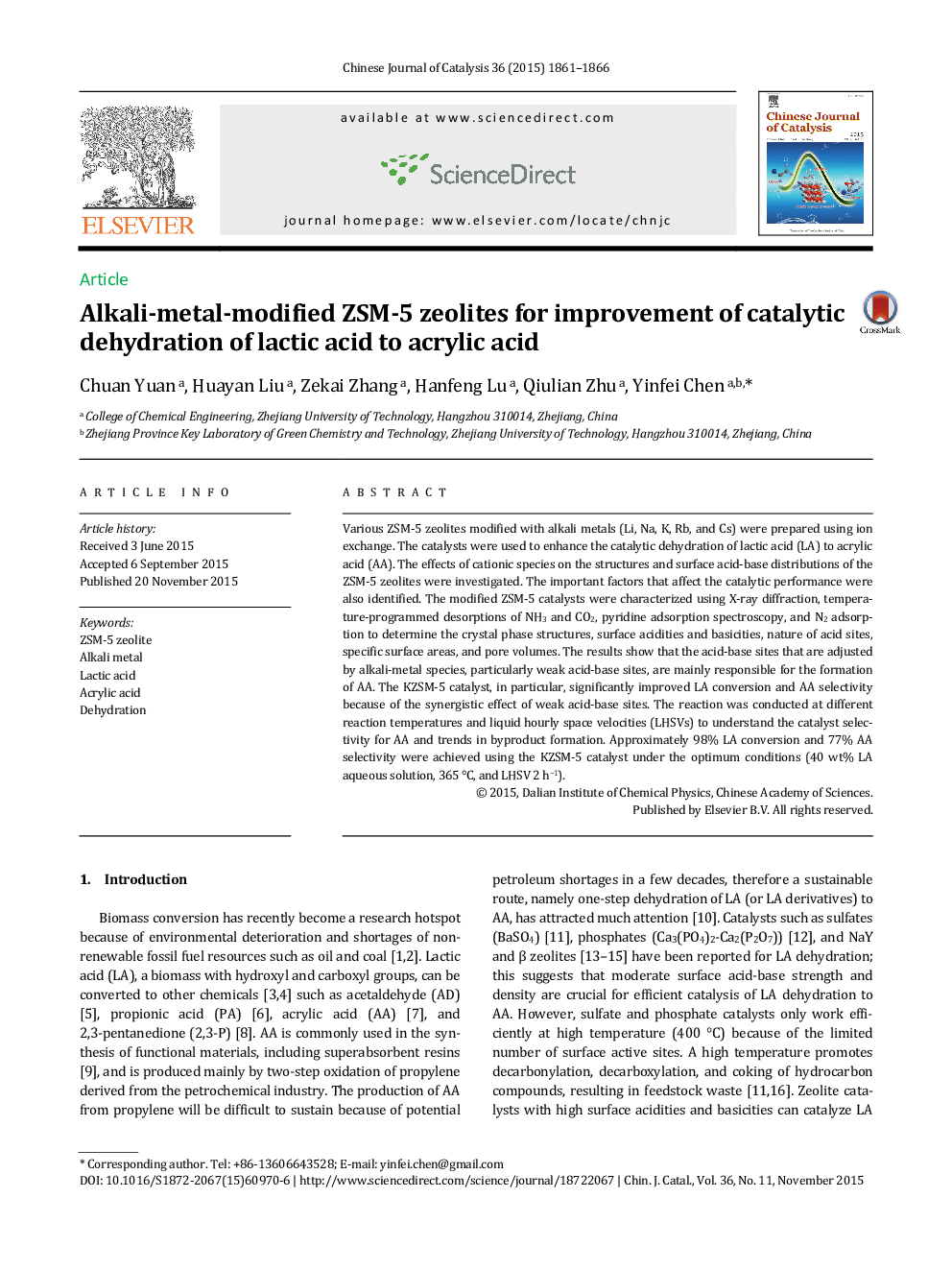| Article ID | Journal | Published Year | Pages | File Type |
|---|---|---|---|---|
| 59804 | Chinese Journal of Catalysis | 2015 | 6 Pages |
Various ZSM-5 zeolites modified with alkali metals (Li, Na, K, Rb, and Cs) were prepared using ion exchange. The catalysts were used to enhance the catalytic dehydration of lactic acid (LA) to acrylic acid (AA). The effects of cationic species on the structures and surface acid-base distributions of the ZSM-5 zeolites were investigated. The important factors that affect the catalytic performance were also identified. The modified ZSM-5 catalysts were characterized using X-ray diffraction, temperature-programmed desorptions of NH3 and CO2, pyridine adsorption spectroscopy, and N2 adsorption to determine the crystal phase structures, surface acidities and basicities, nature of acid sites, specific surface areas, and pore volumes. The results show that the acid-base sites that are adjusted by alkali-metal species, particularly weak acid-base sites, are mainly responsible for the formation of AA. The KZSM-5 catalyst, in particular, significantly improved LA conversion and AA selectivity because of the synergistic effect of weak acid-base sites. The reaction was conducted at different reaction temperatures and liquid hourly space velocities (LHSVs) to understand the catalyst selectivity for AA and trends in byproduct formation. Approximately 98% LA conversion and 77% AA selectivity were achieved using the KZSM-5 catalyst under the optimum conditions (40 wt% LA aqueous solution, 365 °C, and LHSV 2 h−1).
Graphical AbstractLactic acid (LA) conversion of 98% and 77% acrylic acid (AA) selectivity were achieved under the operating conditions 40 wt% LA aqueous solution, 365 °C, and 2 h−1, using a KZSM-5 catalyst, in LA dehydration to AA, because of the synergistic effect of weak acid-base sites.Figure optionsDownload full-size imageDownload as PowerPoint slide
